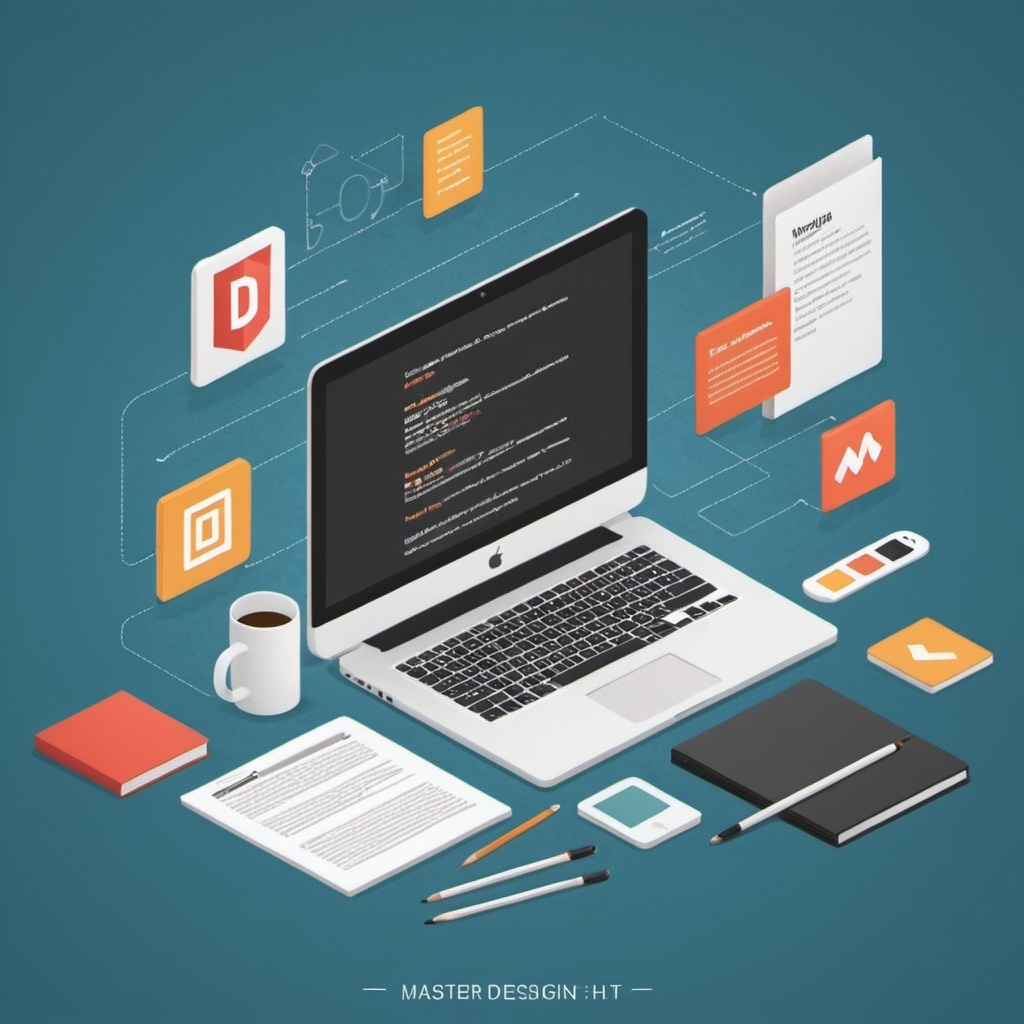Web design Fundamentals is a multifaceted discipline that combines artistry and technical know-how to create visually appealing and functional websites. It encompasses various subdisciplines, including user experience (UX), user interface (UI), and search engine optimization (SEO). To excel in this field, designers must possess a keen eye for detail, adaptability, organizational skills, and innovative thinking.
The process of web design involves two main components: the backend and the frontend. The backend, managed by back-end developers, handles the behind-the-scenes operations that make a website function. This includes server management, database operations, and the use of programming languages like PHP, Python, and Java. On the other hand, the frontend, overseen by front-end developers, focuses on the visual and interactive elements that users directly engage with. This involves the use of HTML, CSS, and JavaScript to create an appealing and user-friendly interface.
Visual design principles play a crucial role in creating standout websites. These principles include the effective use of lines, shapes, texture, and color. Understanding and applying these elements can significantly enhance the overall aesthetic and functionality of a website.
The 9-Step Journey to Becoming a Web Designer
Embarking on a career in web design requires a structured approach to learning and skill development. Here’s a comprehensive 9-step guide to help you navigate this exciting journey:
- Master Visual Design Concepts: Familiarize yourself with fundamental artistic principles such as line, shape, texture, and color theory. These elements form the backbone of appealing web designs.
- Learn HTML Basics: Understand how HTML structures web content and affects search engine rankings. Knowledge of header tags (H1, H2, H3) is particularly important for creating content hierarchy.
- Grasp CSS Fundamentals: CSS is essential for styling HTML elements. Learn how to apply fonts, add padding, set alignment, and choose colors to create unique website designs.
- Understand UX Design: Delve into user experience design, including creating user personas, information architecture, user flows, wireframes, and prototyping.
- Study UI Design: Learn about user interface elements and how they facilitate interaction between users and websites. Focus on creating intuitive and consistent navigation patterns.
Advanced Web Design Techniques
As you progress in your web design journey, you’ll need to master more advanced techniques and concepts:
- Master Layout Basics: Understand common web design patterns like Z-patterns and F-patterns, and learn about responsive web design to ensure your sites look great on all devices.
- Explore Typography: Learn about different typefaces (serif, sans-serif, and display) and how they can evoke emotions and enhance readability.
- Practice, Practice, Practice: Put your knowledge into action by building real projects. Start with a simple blog to gain practical experience with content management systems.
- Find a Mentor: Seek guidance from experienced web designers who can provide valuable feedback and insights based on their own journey in the field.
Choosing the Right Tools for Web Design
Selecting appropriate design tools is crucial for your development as a web designer. Platforms like Webflow offer both beginners and experts the ability to create visually stunning websites with or without coding. These tools can significantly streamline your workflow and allow you to focus on the creative aspects of web design.
The Importance of Continuous Learning in Web Design
Web design is a rapidly evolving field, with new technologies and trends emerging regularly. To stay competitive and relevant, it’s essential to commit to continuous learning. This might involve taking online courses, attending workshops, or participating in web design communities to exchange ideas and stay updated on industry developments.
Building a Strong Portfolio
As you gain skills and experience, focus on building a strong portfolio that showcases your best work. Your portfolio is your calling card in the web design industry, demonstrating your skills, creativity, and problem-solving abilities to potential clients or employers. Include a variety of projects that highlight different aspects of your skills, from responsive designs to interactive elements and user-friendly interfaces.
By following these steps and continuously honing your skills, you’ll be well on your way to becoming a proficient web designer. Remember, the journey of learning never truly ends in this dynamic field, so embrace each new challenge as an opportunity to grow and improve your craft.
Take Your Web Design Skills to the Next Level with TechTalent
Ready to elevate your web design career? TechTalent offers a unique platform to certify your skills and connect with global tech ecosystems. Here’s how TechTalent can boost your web design journey:
- Skill Certification: Gain recognition for your web design expertise through our rigorous certification process.
- Career Progression: Join our certified talent pool, a valuable resource for startups and corporations seeking skilled web designers.
- Impactful Hackathons: Apply your web design skills in real-world challenges, collaborating with peers and mentors.
- Global Opportunities: Connect with diverse tech ecosystems and unlock new career possibilities in web design.
Don’t miss this opportunity to showcase your web design skills on a global platform. Join TechTalent today and take the next step in your professional growth. Certify your skills, connect globally, and design your future in the world of web development!
